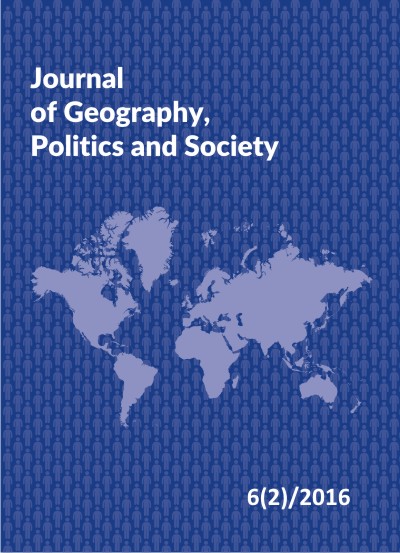Critical analysis of city attractiveness factors in Lithuania – Poland cross-border regions: the viewpoints of businessmen and youth
Keywords:
city attractiveness, cross-border region, Lithuania, PolandAbstract
Rapid development of the global dimension of globalization and information technology has determined the phenomenon when not only countries, but also cities began to compete with one another. For this reason, the city is facing the problem of attractiveness for investment, business and living. It is the identification and development of city attractiveness factors, their incorporation in the city’s strategic development level and their publicity that is focused on the desire to attract new investors, create favorable conditions for entrepreneurs to develop business in the city, maintain or recover/attract young and highly qualified specialists to the city and thus create as a higher quality of life and economic welfare. This article analyzes the main factors of city attractiveness which were identified by businessmen and young people from Lithuania-Poland cross-border cities Alytus and Ełk.
Downloads
References
Balderjahn I., 2004, Standortmarketing – ein konzept zur erfolgreichen vermarktung von stadten und regionen, www.svsm-standortmanagement.ch/UserFiles/File/Workshop2004/ 2004_balderjahn.pdf [05.03.2015].
Boes K., Buhalis D., Inversini A., 2015, Conceptualising Smart Tourism Destination Dimensions, [in:] I. Tussyadiah, A. Inversini (eds.), Information and Communication Technologies in Tourism 2015, Springer, Cham-Heidelberg- New York-Dordrecht-London, 391–403.
Bruneckiene J., Sinkiene J., 2015, The specific of economic competitiveness evaluation of cities from cross-border regions under the context of urban shrinkage, [in:] Conference Proceedings of the VIIIth international conference on applied economics contemporary issues in economy under the title Market or government? Institute of Economic Research and Polish Economic Society, Branch in Toruń, June 18-19, Toruń, Poland.
El Segundo C., 2014, Smart cities to rise fourfold in number from 2013 to 2025, http://press.ihs.com/press-release/ design-supply-chain-media/smart-cities-rise-fourfoldnumber-2013-2025 [20.02.2015].
EU youth work policy implementation report, 2009, European Commission, http://www.eesc.europa.eu/?i=portal.en.publications.33122 [05.03.2015].
Glebova I.S., Khamidullina A.M., Anisimova E.A., 2015, Correlation of Balanced Socio-Economic Development of the City and Its Attractiveness (in the Case of Russian Cities with Population over a Million Citizens), Mediterranean Journal of Social Sciences, 6(1S3), 284–288. Investment in the Baltic States. 2011, KPMG in the Baltics, https://www.kpmg.de/docs/InvestmentBalticSeas.pdf [05.03.2015].
Kilijoniene A., Bruneckiene J., 2012, Bendrosios pasienio regiono socialinės ir ekonominės raidos tendencijos ir verslo augimo veiksniai, Economics and Management = Ekonomika ir vadyba, 17(4), 1365–1371.
Kinda T., 2013, Beyond Natural Resources: Horizontal and Vertical FDI Diversification in Sub-Saharan Africa, Applied Economics, 45, 3587–3598.
Lemaire J.P., Viassone M., 2015, Tourist destinations positioning: From indexes to managerial implications, Journal of Investment and Management, 4(1-1), 30–38.
Litavniece L., 2014, Risk management in provision of city attractiveness, Journal of Positive Management, 5(3), 3–14.
Litavniece L., Ežmale S., 2012, Pilsētu pievilcības koncepcijas pielietošanas iespējas Latvijā: Rēzeknes piemērs, Latvijas Zinātņu Akadēmijas Vēstis, 66(1/2), 20–34.
Sabonienė A., Zykienė I., 2012, Verslo plėtros pasienio regionuose patrauklumo vertinimas infrastruktūros aspektu, Economics and Management = Ekonomika ir vadyba, 17(4), 1410–1416.
Sinkiene J., Grumadaite K., Liugailaite-Radzvickiene L., 2014, Diversity of theoretical approaches to the concept of smart city [in:] Business and management 2014: the 8th international scientific conference, May 15-16, 2014, Vilnius, Lithuania: selected papers, vol. 2, 933–940.
Sinkiene J., Kromalcas S., 2010, Concept, Directions and Practice of City, Attractiveness Improvement, Viesoji politika ir administravimas – Public Policy and Administration, 31, Vilnius, 147–154.
Snieska V., Zykiene I., 2011, Fizinės infrastruktūros įtaka regioniniam patrauklumui, Economics and Management = Ekonomika ir vadyba, 6, 465–471.
Snieska V., Zykiene I., 2014, The role of infrastructure in the future city: theoretical perspective, [in:] Procedia Social and Behavioral Sciences: 19th international scientific conference Economics and Management 2014, ICEM-2014, 23-25 April 2014, Riga, Latvia, 156, 247–251.
Staskevičiūtė G., Tamošiūnienė R., 2010, Šalies konkurencingumas: sampratos raida laiko perspektyvoje, Verslas: teorija ir praktika, 11(2), 159–167.
Van Gorp N., 2009, Backwardness Of Border Regions, Tijdschrift voor Economische en Sociale Geografie, 100(3), 358–364.
Židonis Ž., 2012, ES struktūrinių fondų parama Lietuvos jaunimo verslumui skatinti: valstybės intervencijos logikos rekonstrukcija, Viesoji politika ir administravimas – Public Policy and Administration, 11(2), 222–234.

 Academic Scientific Journals
Academic Scientific Journals




